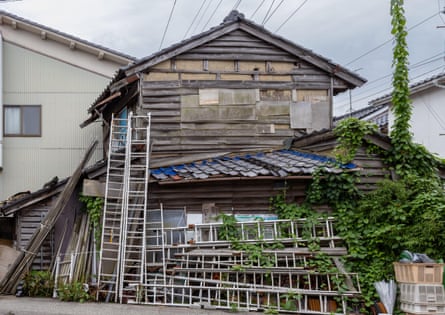Akiya houses: why Japan has nine million empty homes
As the declining population continues to impact Japan’s society and economy, the number of vacant houses has topped nine million – enough to accommodate the entire population of Australia at three people per dwelling.
Government figures released on Tuesday show the number of empty houses, known as akiya, as of October 2023 was up by more than half a million since the previous survey in 2018.
At the root of the issue is rural depopulation combined with many of those who inherit such properties being unable or unwilling to live in them, refurbish or even demolish them. Cities are not immune though, and there are hundreds of thousands of long-term empty houses in urban areas.
That total figure of vacant homes represents nearly 14% of all houses in Japan, though the real number could be higher. The Nomura Research Institute estimates there are nearly 11m akiya and that they could account for more than 30% of houses within a decade.

More than 4.4m of the properties surveyed are available to rent – but have been empty long-term and are mostly away from the main population centres. The status of more than 3.8 million is unknown and only 330,000 of the 9m were up for sale.
Vacant land attracts higher taxes in Japan than land with buildings, adding to the financial burden of knocking down old houses and leading some people to avoid inheriting properties.
However, there is growing interest among foreigners in this glut of empty properties, particularly kominka (traditional) houses as an option for cheap and unusual accommodation, holiday homes or to rent out to tourists.
Hana Sakata and her husband have been renovating and renting out houses for almost a decade through their New Heritage venture, beginning with a holiday home on the Izu peninsula that had lain vacant and fallen into utter disrepair. They acquired a traditional kominka house in a village in mountainous Nagano after part of it collapsed under the weight of uncleared snow while its elderly owner was in a care facility.

However, the cost of restoring such properties to their former glory is enormous, warns Sakata, who is still grappling with the kominka project.
“There is a lot of hype now, particularly among foreigners, about these gigantic farmhouses in Japan being available very cheaply or free. But it’s a huge commitment and there aren’t many contractors that can fix them up – the traditional carpentry skills are dying out,” she says. “In 10 years we could see a lot of foreign-owned akiya.”
Nevertheless, interest among foreign tourists in experiencing a stay in traditional Japanese accommodation is high, with demand currently outstripping supply, notes Sakata.
The yen being at multi-decade lows against major currencies has helped drive a tourism boom, with a record 3 million overseas visitors in March.
Japan is far from the only nation grappling with demographic fallout. In neighbouring South Korea the birthrate per woman fell to a record low of 0.72 last year, well below even the 1.26 figure Japan logged in 2022. Both Singapore and Taiwan have also dropped below one child per woman, while fertility rates in the US are also at their lowest in a century.